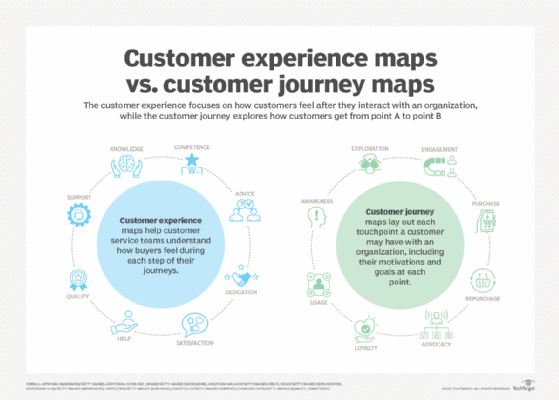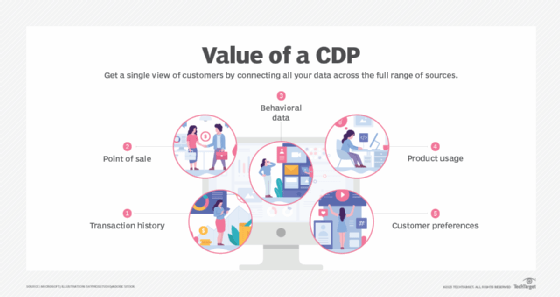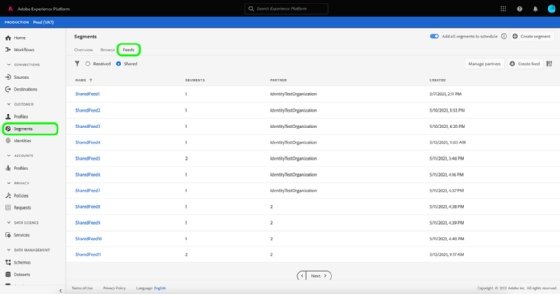Adobe Experience Platform
What is Adobe Experience Platform?
Adobe Experience Platform is a suite of customer experience management (CXM) solutions from Adobe. Organizations can use the platform to centralize customer data and to design and deliver rich, personalized CX.
Experience Platform is a powerful, flexible open system for building customized CX with the help of data science and machine learning. It includes numerous real-time personalization and user interaction tools to create highly individualized digital experiences for customers. In addition, it provides organizations with a 360-degree view of their customers and those customers' preferences, and then use this data to design richer CX.
Organizations that have invested in Adobe Experience Cloud applications such as Marketing Cloud, Analytics Cloud, Advertising Cloud or Commerce Cloud can use Experience Platform to bring together customer data from all these applications -- and other non-Adobe applications -- and use it for CX design and delivery.
The platform is built on RESTful APIs and can be easily integrated with other tools and applications. Adobe has built multiple applications and services on top of Adobe Experience Platform, including its Real-Time Customer Data Platform (RTCDP), Journey Optimizer, Customer Journey Analytics (CJA) and Journey Orchestration.
Architecture of Adobe Experience Platform
Multiple elements work together to form a cohesive architecture for Adobe Experience Platform. Data sources comprise the primary element of Experience Platform's architecture, and the platform can ingest data from many sources, including the following:
- CRM platforms.
- ERP platforms.
- Sales and marketing tools.
- Enterprise data lakes.
- Customer insight tools.
- Machine learning models.
Adobe Experience Platform can ingest data from any of these sources via streaming or a batch API. Adobe also provides connectors that directly ingest data into the platform from many data sources -- such as extract, transform and load tools -- as well as other Adobe applications.
Once the platform ingests data, that data gets placed in its raw form into the platform's data lake. Adobe Experience Platform features access controls to data and capabilities for specific users and data governance controls to ensure that data is properly used. An extensible "experience data model" provides a common taxonomy for any data stored in the platform, enabling detailed data analyses and the creation of more unified profiles.
Other important elements of the platform include query services, a data science workspace and intelligent services. Query services enable administrators to run SQL queries on the raw data in the platform and enable external applications such as Power BI to access data in the data lake. The workspace creates a space for data scientists to build models using the data in the lake. Intelligent services such as attribution AI are prebuilt models that help accelerate model-building and generate useful and actionable customer insights. The platform's Segment Builder operates against real-time customer profiles and enables organizations to do things like build user populations.
The Experience Platform also includes applications for business users such as marketers. These business user applications -- including CJA, RTCDP and Journey Orchestration -- sit on top of the platform. It can also be integrated with additional third-party customer and partner applications via APIs.
Benefits of Adobe Experience Platform
Using Adobe Experience Platform can bring a variety of benefits to an organization, such as the following:
- The ability to update and maintain customer data in real time.
- API support to integrate other CXM technologies and capabilities.
- The development of personalized CX applications for mobile devices.
- Elimination of data silos by storing information in one centralized place.
- Adobe Sensei, an AI and machine learning engine that can automate common tasks, create personalized CX and draw predictions from customer data.

Key tools in Adobe Experience Platform
The Adobe Experience Platform includes numerous tools to collect customer data, create customer profiles and journeys and design personalized CX. Popular tools include the following:
- CJA, which collects data from the platform's data lakes and enables businesses to create a comprehensive picture of customer journeys.
- RTCDP, which creates customer profiles from real-time data gathered from multiple sources.
- Journey Optimizer, which includes Journey Orchestration and Offer Decisioning tools to contextualize a customer's current journey position and build dynamic marketing offers accordingly.
- Identity Graph, which connects different data sets and informs the RTCDP.
- Intelligent Services, which create algorithms that can then create propensity models and attribution models to improve CX design.
- Adobe Sensei, which creates user profiles and demographic personas to help marketers identify the most effective content for a user's journey.

Alerts and sandboxes in Adobe Experience Platform
The platform provides several features that help with administration and oversight to improve usability. Event-based alerts about platform activities can send alerts when a job has completed or when errors occur, which reduces the requirement of polling the Observability Insights API. Alert messages can be sent once, or they can repeat for a predetermined time interval until the alert is resolved.
The experience platform provides two channels to manage alerts: Adobe I/O Events and Platform UI. However, an administrator must enable several access controls permissions through the Adobe Admin Console in order to work with the Platform UI. These permissions include View Alerts, View Alerts History, Manage Alerts and Resolve Alerts.
The Adobe Experience Platform provides sandboxes where developers can develop, test and deploy multiple digital experience applications in parallel. A sandbox represents a virtual environment for both development and production purposes. It maintains its own independent library of Platform resources, such as schemas, datasets and profiles. Production sandboxes can be used with profiles in the production environment, while development sandboxes can be used for development and testing with non-production profiles.

Important integrations with Adobe Experience Platform
Adobe Experience Platform integrates with many Adobe Experience Cloud applications and application services. For example, its two-way integration with Analytics Cloud ensures that data collected via the Web/Mobile SDK can be forwarded to Adobe Analytics and data collected by Analytics Cloud can be sent to the platform data lake and profile store.
The platform also integrates with Adobe Audience Manager so that audiences defined in the RTCDP can be shared with Audience Manager for activation in third-party cookie destinations. Similarly, integrations with Campaign Classic and Campaign Standard enable audiences defined in RTCDP to be shared with each relevant application in order to initiate campaigns.
Some other important integrations of Experience Platform include the following:
- Experience Manager, which powers personalized CX through the Target integration.
- Journey Optimizer, which initiates and powers customer journeys to build audiences.
- Adobe Commerce, which personalizes audiences and profiles built in RTCDP.
- Marketo Engage, which shares audiences defined in RTCDP to initiate campaigns.
- Target, which shares audiences and profile attributes from RTCDP for the purpose of personalizing and targeting experiences.
Learn about top online customer experience training courses.







